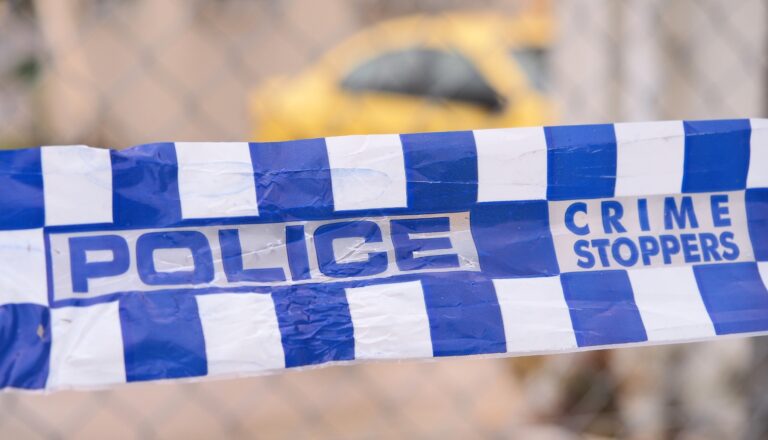
Sydneysider: A personal journey
From time to time, in the early 1960s, when I was in the school cadets, I used to carry my rifle home on the train. It was a big Lee-Enfield .303, the legendary ten shot bolt-action rifle that soldiers of the British Empire had carried into the two world wars, and numerous other conflicts.
Kids in uniform, with guns, on public transport, were a relatively common sight back then. The guns were normally stored at secure armouries at schools but when the time for school cadet camp came around, with hundreds of guns to be transported all the way to Singleton army camp it was simply easier to have each cadet carry their own rifle. We signed for our rifles and took them home for a few days until the whole unit assembled at Central Station (or Strathfield) to be hauled to Singleton in old wooden carriages. Of course even if you obtained some ammunition, you couldn’t have fired the rifle because its bolt had been removed. The bolt wasn’t reunited with the rifle until you got to camp.
In the cadets, we also had Bren guns, the famous light machine gun that had come into service just before the Second World War, but these were far too dangerous (and valuable) to be allowed out in public so they travelled to camp in heavy wooden boxes.
I can remember once, on my way home with my rifle, about 1964 or ‘65, I stopped at a small bookshop I used to frequent on the Boulevarde in Strathfield, to see if they had the latest sci-fi magazines, and I found a paperback about the exploits of Mad Mike Hoare’s mercenaries in the Congo and there was a reference to an uncle on my mum’s side despatching an unfortunate African rebel with a bazooka.
The bookshop has long gone. It was about where the entrance to Strathfield Plaza now stands and only metres from the spot where, in August 1991, a 33-year-old loner called Wade Frankum began the rampage known as the Strathfield Massacre. In ten minutes, Frankum – armed with a knife and a commonly-available Chinese SKS assault rifle – killed eight and wounded six.
Frankum then fled to the rooftop car park and held a car owner at gunpoint, demanding she drive him to Enfield, but before she could start her car, police began to arrive on the scene. Frankum apologised to the woman, got out of the car, knelt on the ground, and shot himself in the head.
It wasn’t the first modern mass killing in Australia, having been proceeded four years earlier by Melbourne’s Hoddle St massacre, and it wasn’t to be the last. In the 18 years before the reform of Australia’s gun laws in the wake of the April 1996 Port Arthur Massacre (35 dead, 19 wounded) there were 112 Australians killed and 52 wounded in 13 mass shooting incidents. There have been no mass shootings in the decade since semi automatic rifles and shotguns were effectively illegalised, which is what the reforms were designed to achieve.
I thought of the Strathfield Massacre when I heard about the Newtown, Connecticut massacre in the United States and saw the American gun nuts and their National Rifle Association trot out their usual idiot slogans: “Guns don’t kill people, people kill people”, “You can kill people with a billiard cue you know”, and so on.
You certainly can kill someone with a billiard cue but it would be bloody hard to kill 27 people, even 27 kids. Pretty soon after the assault started, everybody would have run away or the assailant would have been overpowered. The fact is, technology does matter. Modern semi-automatic military rifles are extraordinary killing machines and when they became widely available to the public, in the 1970s, the lethal capability of the lone nutcase increased dramatically.
But technology wasn’t the only thing that had changed in the years between when schoolkids carried .303s on the train and the Strathfield massacre. Back then civilian hunting rifles and shotguns were very common, but firearms were seen as utilitarian objects, hunting tools. And again, we were still in the age of mass, conscripted, citizen armies. The standard military small arms were something most males had had some training in, either during National Service or in the school cadets so there was simply no mystique surrounding them. It was all about disciplined, mass, social violence.
All that changed, and particularly after the debacle of the Vietnam War. Fighting unpopular wars with conscript armies is a very risky business and the ruling elites decided small professional armies were more biddable. With the new professionalism a new cult of ‘special forces’ and lone avengers arose and was reflected in countless, Rambo-type movies and computer games that speak to the soul of the unbalanced, the angry, the dumb and the dangerous.
If you’re a loser, a nobody, you can become a winner and a somebody and be remembered. You can adjust the bottom line, going out in a welter of gore. It is a whole industry and creeps have made a lot of money out of it.









